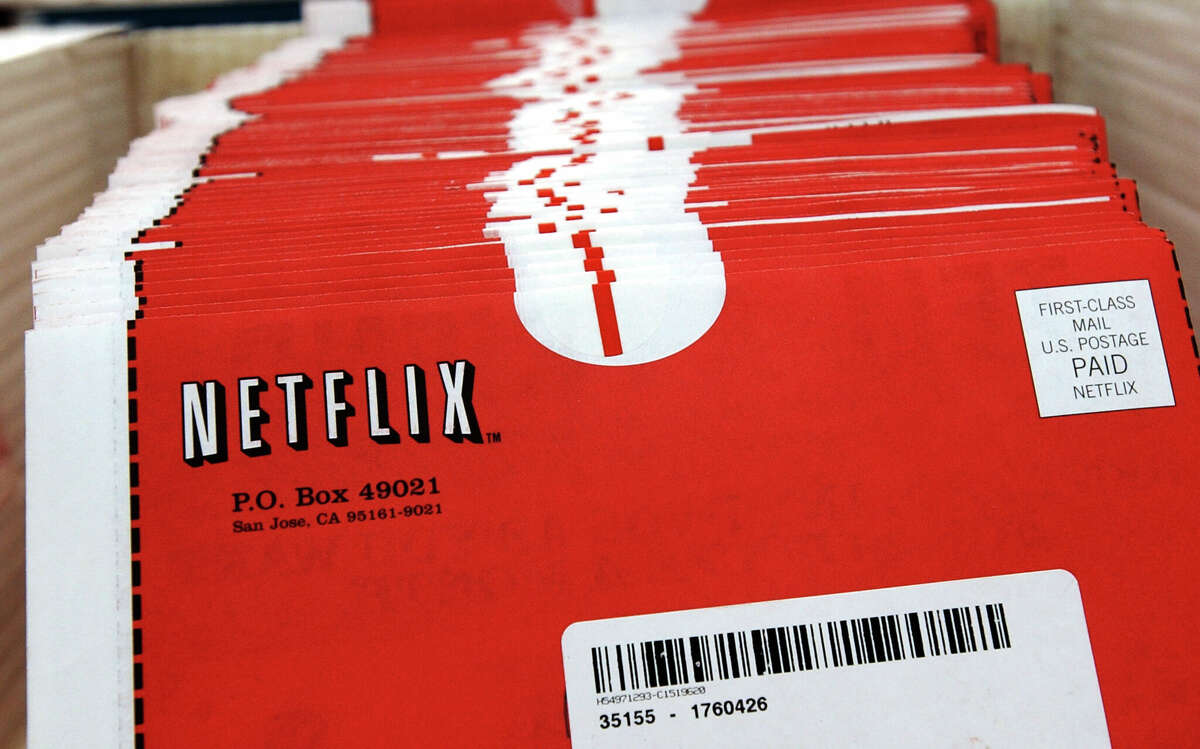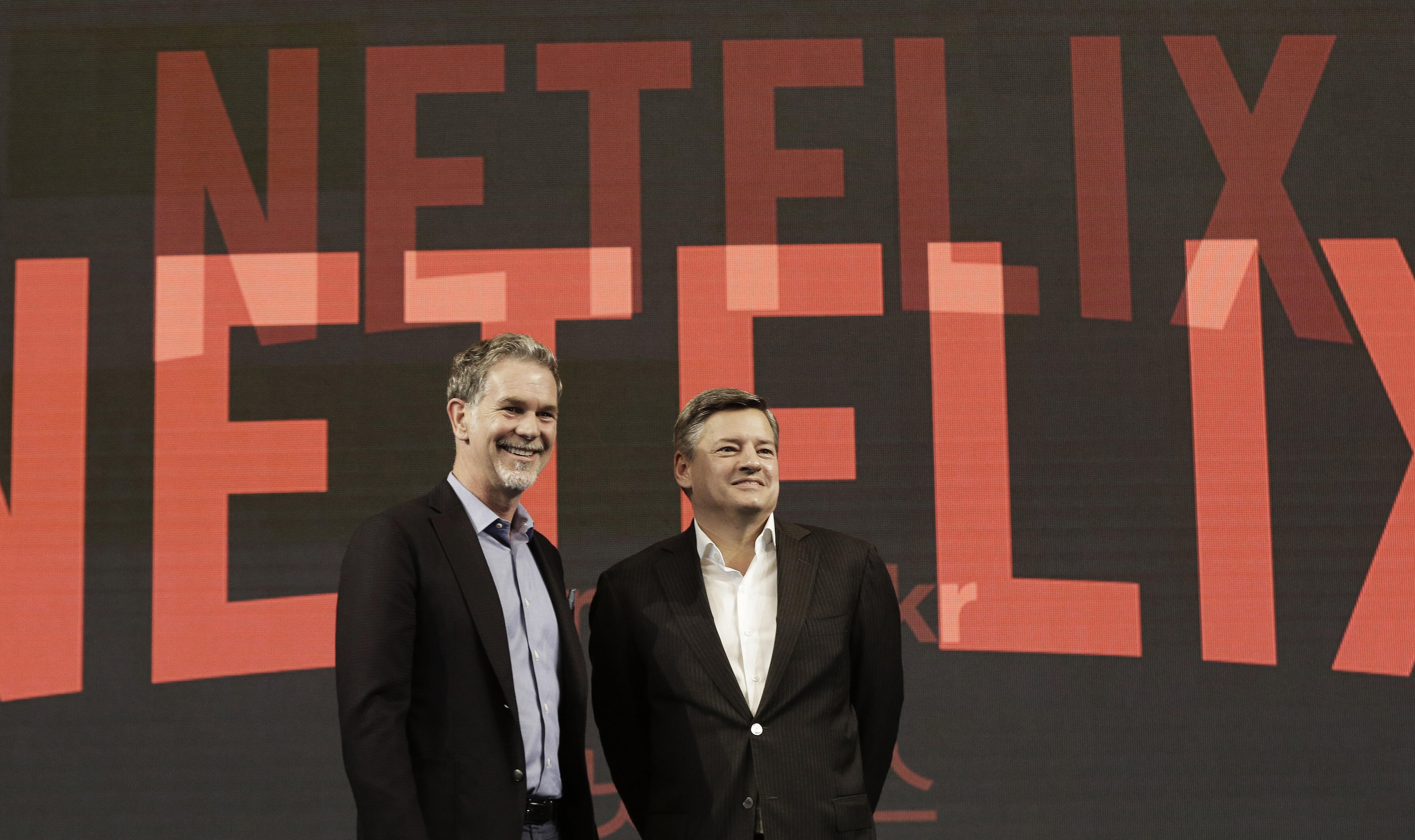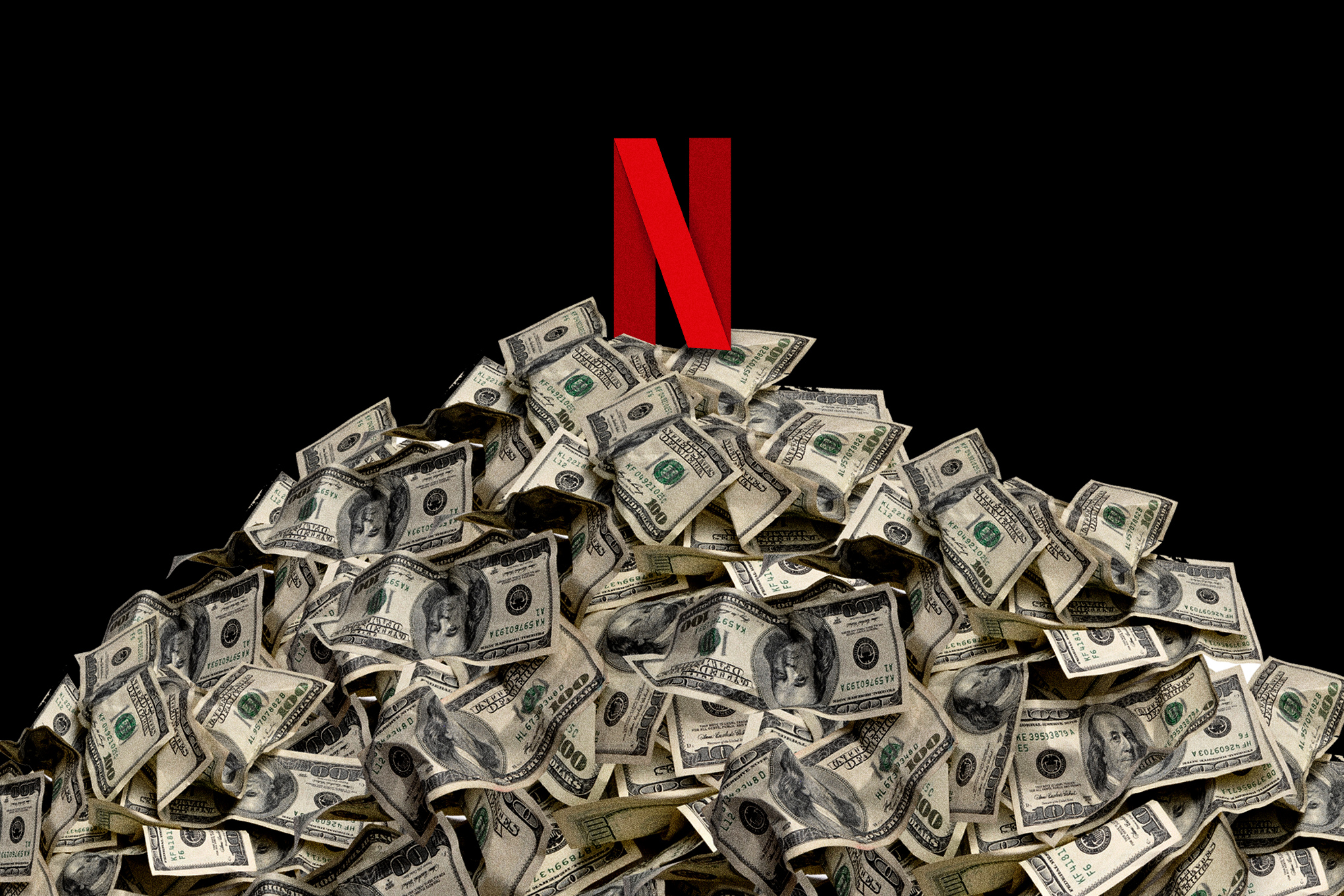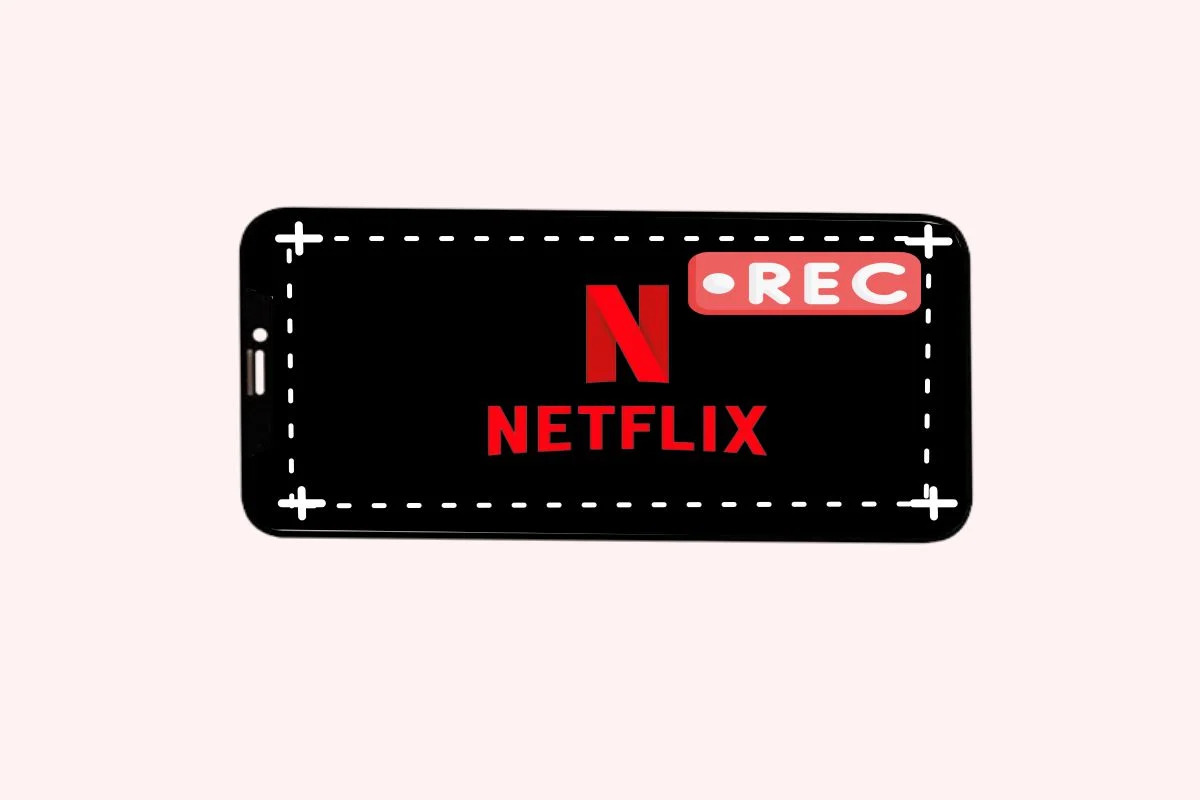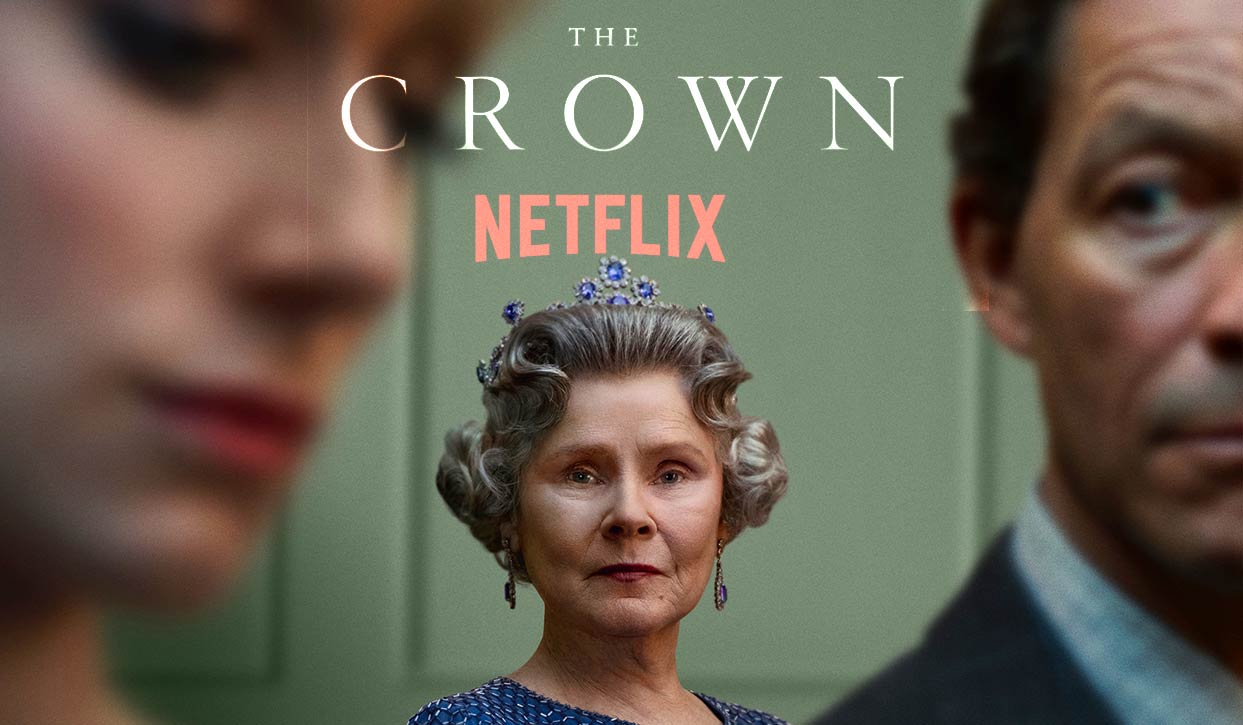Introduction
Over the past decade, the entertainment industry has witnessed a monumental shift in the way we consume movies and TV shows. Gone are the days of video rental stores and the anticipation of receiving the latest DVD in the mail. Instead, streaming services have taken over, offering instant access to a vast library of content.
However, it’s important to remember the precursor to streaming: DVD mailing services. Before the advent of platforms like Netflix, there was a time when movie lovers relied on physical DVDs being delivered to their doorsteps. Understanding the evolution of DVD mailing services and their subsequent transition to streaming provides valuable insights into how our entertainment consumption habits have changed.
This article aims to delve into this transition, focusing specifically on Netflix, one of the pioneers in the DVD rental and streaming industry. We will explore the rise of DVD mailing services, the birth of Netflix, the transition from DVD rentals to streaming, and the ultimate decline of DVD rentals.
Moreover, we will address the burning question that many movie enthusiasts have: when did Netflix stop mailing DVDs? We will examine this pivotal moment in the company’s history and analyze the impact of streaming on the DVD rental market.
Finally, we will explore the future of DVDs in an increasingly streaming-oriented era, and how they may still hold relevance for certain audiences.
The Rise of DVD Mailing Services
In the late 1990s and early 2000s, DVD mailing services emerged as a convenient and cost-effective alternative to traditional video rental stores. These services provided subscribers with the opportunity to browse an extensive library of movies and television shows online and have the desired DVDs delivered right to their doorstep.
One of the key pioneers in this industry was Netflix. Founded in 1997 by Reed Hastings and Marc Randolph, Netflix started as a DVD sales and rental service, offering customers a subscription-based model that allowed them to rent DVDs without any late fees. Netflix revolutionized the rental experience by allowing users to keep the DVDs for as long as they wanted, with no due dates.
The rise of DVD mailing services was driven by several factors. First, it provided convenience. Subscribers no longer had to visit physical rental stores and search for the movies they wanted. They could access a vast catalog online and have their selected DVDs delivered to their doorstep within a few days.
Moreover, DVD mailing services offered a much wider selection of movies and TV shows compared to traditional rental stores. They could stock a larger inventory and cater to a broader range of interests and preferences. This allowed movie enthusiasts to discover hidden gems, explore different genres, and binge-watch entire TV series.
Furthermore, DVD mailing services eliminated the need for late fees and due dates, which were often a source of frustration for rental store customers. Subscribers could watch movies at their own pace, without the pressure of returning them within a specific timeframe. This newfound flexibility was embraced by movie lovers around the world.
The rise of DVD mailing services also coincided with advancements in technology. The emergence of DVD players in households made it easier for people to enjoy high-quality movie experiences at home. The convenience of DVD rentals, combined with the growing popularity of DVD players, led to a significant surge in the demand for DVD mailing services.
Overall, the rise of DVD mailing services in the late 1990s and early 2000s marked a transformative period in the entertainment industry. People were no longer bound by the limitations of physical rental stores, and the concept of having DVDs delivered to one’s doorstep gained widespread popularity. However, this was just the beginning of a much larger revolution that was about to take place in the world of entertainment – the transition to streaming.
The Birth of Netflix
The birth of Netflix as a DVD rental and streaming service proved to be a significant turning point in the entertainment industry. Originally founded in 1997 by Reed Hastings and Marc Randolph, Netflix began its journey as a DVD rental-by-mail service, offering customers a convenient and affordable way to enjoy their favorite movies and TV shows.
At its inception, Netflix faced fierce competition from rental giants like Blockbuster. However, the company had a game-changing idea that would set it apart – the subscription-based model. Instead of charging customers per rental, Netflix introduced a monthly subscription fee that allowed members to rent DVDs without worrying about late fees or due dates. This disruptive approach quickly gained traction, propelling Netflix from a small startup to a household name.
In the early days, Netflix operated purely through physical DVDs. Users would log into the website, browse through the extensive catalog, and create a queue of movies and shows they wanted to watch. Netflix would then mail the DVDs from their distribution centers directly to the subscribers’ homes.
One of Netflix’s key innovations was the development of a recommendation algorithm. They leveraged customer data and viewing habits to offer personalized movie suggestions, making the experience more tailored and user-friendly. This algorithm played a crucial role in retaining and expanding their subscriber base, as users appreciated the personalized recommendations that helped them discover new content.
As Netflix continued to grow, it recognized the potential of digital streaming technology. In 2007, the company introduced the first online streaming service, allowing subscribers to instantly watch a selection of movies and TV shows on their computers. This marked the beginning of Netflix’s journey into the world of streaming.
The initial streaming library was limited compared to the DVD catalog, but it showcased Netflix’s vision of a future where instant access to content would become the norm. The streaming service gained popularity due to its convenience and the ability to watch movies and shows without the need to wait for DVDs to arrive in the mail.
The birth of Netflix as a streaming platform drove the company to invest heavily in content licensing and production. By striking deals with major studios and producing their original series and movies, Netflix aimed to build a comprehensive and diverse catalog that would keep subscribers engaged and provide a competitive edge in the evolving streaming market.
Netflix’s successful transition from a DVD rental service to a streaming powerhouse laid the groundwork for the streaming revolution that would follow. By combining the convenience of DVD rentals with the instant gratification of streaming, Netflix set the stage for the dramatic shift in how we consume entertainment.
The Transition to Streaming
As technology advanced and internet speeds improved, the entertainment industry witnessed a seismic shift toward streaming as the primary method of consuming movies and TV shows. This transition from physical media to digital streaming was driven by several factors that revolutionized the way we access and enjoy content.
One of the key driving forces behind the transition to streaming was the increasing availability of high-speed internet connections. With faster internet speeds becoming more commonplace, streaming platforms like Netflix, Hulu, and Amazon Prime Video gained prominence. These platforms offered subscribers instant access to a vast library of movies and TV shows, eliminating the need for physical media and the inconvenience of waiting for DVD deliveries.
Another factor that contributed to the transition was the rise of smart devices and connected TVs. With the proliferation of smartphones, tablets, smart TVs, and streaming devices like Roku and Chromecast, consumers could easily stream their favorite content on the device of their choice. This newfound flexibility and accessibility further accelerated the adoption of streaming.
The transition to streaming also offered a higher level of customization and personalization. Streaming platforms leveraged algorithms and user data to provide personalized recommendations, allowing viewers to discover new content tailored to their preferences. This personalized approach to content consumption transformed the way we explore and engage with movies and TV shows.
Moreover, streaming provided a more cost-effective solution for entertainment. With subscription-based models and the ability to stream unlimited content for a fixed monthly fee, consumers found streaming services to be a more affordable alternative to purchasing or renting physical copies of movies and TV shows.
As the popularity of streaming skyrocketed, more and more studios and content creators began to embrace the digital landscape. They recognized the potential of reaching a global audience through streaming platforms, leading to an increase in original content production and exclusive licensing deals. This shift in industry dynamics further cemented streaming as the dominant force in the entertainment world.
The transition to streaming not only changed the way we watch movies and TV shows but also influenced the storytelling and production of content. Streaming platforms provided a platform for unique and niche content that may not have found a home in traditional media outlets. This resulted in a surge of diverse and innovative storytelling, giving rise to critically acclaimed series and films that captivated global audiences.
Overall, the transition to streaming revolutionized the entertainment industry, offering consumers a new level of convenience, affordability, and choice. It paved the way for a new era of content consumption, one where instant access, personalization, and a vast library of options became the norm.
The Decline of DVD Rentals
With the rise of streaming services, the decline of DVD rentals became inevitable. As more people embraced the convenience and instant access provided by streaming platforms, traditional DVD rental stores began to struggle, ultimately leading to their demise.
One of the main factors contributing to the decline of DVD rentals was the changing consumer behavior and preferences. Streaming services offered a vast library of content that was readily available at the click of a button, eliminating the need to drive to a rental store, search for desired movies, and return them within a limited timeframe. The convenience of streaming attracted a generation that valued instant gratification and on-demand entertainment.
Furthermore, streaming platforms provided a wider selection of content compared to rental stores. DVD rental stores had limitations in terms of space and the number of copies they could stock. On the other hand, streaming services could offer an extensive catalog that catered to diverse tastes and interests. The ability to browse through a seemingly endless library of movies and TV shows made streaming a more attractive option for consumers.
The decline of DVD rentals was also influenced by the advancements in technology. As internet speeds improved and streaming became more seamless, consumers were less inclined to rely on physical media. With the rise of smart devices, smart TVs, and streaming devices, people could easily access their favorite content from the comfort of their own homes, further diminishing the need for DVD rentals.
Another factor that contributed to the decline was the increasing costs associated with DVD rental stores. The overhead expenses of operating physical locations, maintaining inventory, and staffing proved to be a financial burden for many rental businesses. In contrast, streaming services operated through digital platforms, minimizing operational costs and allowing them to offer competitive pricing models.
Additionally, the decline of DVD rentals can be attributed to the changing landscape of movie distribution. Studios and production companies shifted their focus to digital distribution and struck exclusive licensing deals with streaming services. This meant that some movies and TV shows were only accessible through streaming platforms, further incentivizing consumers to abandon DVD rentals in favor of streaming subscriptions.
As DVD rentals continued to decline, iconic rental store chains such as Blockbuster struggled to adapt to the changing landscape. Blockbuster, once a dominant player in the industry, eventually filed for bankruptcy in 2010, marking the end of an era for traditional DVD rentals.
While DVD rentals may have diminished significantly, it’s important to acknowledge that there is still a niche audience that appreciates the tangibility and collectability of physical media. DVD and Blu-ray collectors, movie enthusiasts, and avid cinephiles continue to value the experience and quality that physical media provides. However, the overall decline of DVD rentals highlights the transformative impact that streaming has had on the way we consume entertainment.
When Did Netflix Stop Mailing DVDs?
The shift from DVD mailing to streaming services was a pivotal moment in Netflix’s history. Recognizing the growing popularity of streaming and the diminishing demand for physical media, Netflix made the decision to halt its DVD mailing service in favor of focusing on its streaming platform.
The exact date when Netflix stopped mailing DVDs was September 18, 2011. This marked the end of an era for the company and symbolized their full commitment to the streaming revolution. While many subscribers had transitioned to streaming by this point, there were still loyal DVD rental customers who enjoyed the service.
The decision to discontinue DVD mailing was influenced by several factors. First and foremost was the incredible growth of Netflix’s streaming platform. Streaming had become the primary method through which subscribers accessed and consumed content. This shift in consumer behavior made it clear that the future of entertainment lay in digital streaming.
Another factor was the changing landscape of content licensing and distribution. Streaming allowed Netflix to negotiate licensing deals directly with studios, eliminating the need to maintain a physical inventory of DVDs. This resulted in cost savings and a more efficient distribution model, further cementing the company’s decision to focus on streaming.
Moreover, streaming offered a more scalable business model for Netflix. As the subscriber base grew, the costs associated with DVD rentals, such as inventory management, shipping, and customer support, became increasingly burdensome. By focusing on streaming, Netflix could expand its reach and provide a seamless and scalable service to millions of subscribers around the world.
Although Netflix stopped mailing DVDs in 2011, the DVD rental service continued to operate for existing customers who had not yet made the transition to streaming. However, over time, the number of DVD subscribers dwindled as more people embraced the convenience and variety of streaming.
It’s worth noting that while Netflix no longer offers DVD rentals as part of its subscription service, there are still online rental services available that cater to movie enthusiasts who prefer physical media. These niche rental services cater to a specific audience that appreciates the unique qualities of DVDs and Blu-rays, such as special features, director’s commentaries, and collectible packaging.
The decision to stop mailing DVDs marked a significant milestone in Netflix’s evolution. It solidified their position as a streaming powerhouse and paved the way for the future of digital entertainment. As the company continued to invest in original content and expand its global presence, Netflix became synonymous with streaming, forever shaping the way we consume movies and TV shows.
The Impact of Streaming on DVD Rental
The emergence and rapid growth of streaming services have had a profound impact on the DVD rental market. As more people embraced the convenience and accessibility of streaming platforms, the demand for DVD rentals declined significantly. Several key factors contributed to this shift in consumer behavior and the subsequent impact on the DVD rental industry.
One of the primary impacts of streaming on DVD rental was the decline in customer numbers for traditional rental stores. With the ability to instantly stream movies and TV shows from the comfort of their own homes, consumers found it more convenient to access a vast catalog of content online rather than making a trip to a physical store to rent DVDs.
The convenience factor played a crucial role in the prominence of streaming. Subscribers no longer had to worry about returning DVDs, incurring late fees, or dealing with limited stock at rental stores. Instead, they could enjoy the flexibility of streaming their favorite content at any time and from any compatible device.
The wide range of content available on streaming platforms has also impacted the demand for DVD rentals. Streaming services offer an extensive library of movies and TV shows, including original content, exclusive licensed content, and a variety of genres. This vast selection, combined with personalized recommendations, offers users a streamlined and tailored viewing experience that traditional DVD rental stores cannot match.
Another factor contributing to the decline of DVD rental was the cost-effectiveness of streaming subscriptions. Many streaming platforms offer unlimited access to a wide variety of content for a fixed monthly fee, often at a fraction of the cost of renting multiple DVDs. This affordability, coupled with the ability to watch as much as desired without incurring additional fees, made streaming a more attractive and cost-efficient option for entertainment.
Technology advancements also played a significant role in the impact of streaming on DVD rental. With the proliferation of smart TVs, streaming devices, and high-speed internet connections, consumers had the means to easily access streaming platforms and enjoy a smooth and seamless viewing experience. This accessibility made streaming a more enticing proposition compared to the limitations of physical DVD players and rental store visits.
As a result of these factors, the DVD rental market experienced a steady decline. Rental stores, such as Blockbuster, which was once synonymous with movie rentals, struggled to adapt to the shift toward digital streaming and ultimately faced closures. The decline in demand for DVD rentals forced many rental businesses to reevaluate their operations and explore new avenues for revenue generation.
Despite the decline, it’s worth noting that there is still a niche market for DVD rentals. Some individuals, such as collectors, cinephiles, and those in areas with limited internet access, continue to value physical media for its quality, collectability, and tangibility. However, this market segment represents the minority compared to the growing number of people who favor the convenience and variety offered by streaming platforms.
The impact of streaming on DVD rental is undeniable. Streaming services have revolutionized the way we consume entertainment, offering a seamless and personalized viewing experience that has reshaped the entire industry. The decline of DVD rental highlights the transformative power of digital streaming and how it has become the preferred method of accessing movies and TV shows for the majority of consumers.
The Future of DVDs in the Streaming Era
As streaming services continue to dominate the entertainment landscape, the future of DVDs in the streaming era may seem uncertain. However, while streaming has undoubtedly become the preferred method of content consumption for many, DVDs still hold relevance for certain audiences and offer unique advantages that streaming may not fulfill entirely.
One of the primary factors contributing to the future of DVDs is the niche market of collectors and movie enthusiasts. Physical DVDs, especially those in limited editions or with bonus features, hold a certain charm and appeal for collectors who appreciate the tangible nature of media. The physical packaging, artwork, and additional content like director’s commentaries and behind-the-scenes footage provide a more immersive and comprehensive experience that streaming platforms may not offer.
Additionally, DVDs become important for film preservation and access to rare or obscure movies. While streaming platforms predominantly focus on popular and mainstream content, DVDs can cater to niche audiences, allowing them to access a broader range of films that may not be available through streaming services.
Furthermore, DVDs offer a level of autonomy and accessibility that streaming cannot always provide. In remote areas or places with limited internet access, DVDs still serve as a reliable means of enjoying movies and TV shows. This is especially relevant for individuals who do not have reliable internet connections or prefer to avoid potential buffering or streaming quality issues.
Moreover, DVDs can still be a viable option for families or individuals who have concerns about internet privacy or security. With streaming, data privacy and security concerns have become more prominent. DVDs can offer a sense of control and privacy as they do not require an internet connection to watch, ensuring that personal information is not being shared or monitored.
However, it’s important to acknowledge that the demand for DVDs is diminishing in the face of the soaring popularity of streaming services. The convenience, accessibility, and vast libraries offered by streaming platforms have made them the go-to choice for the majority of consumers. There is a clear shift towards the digital realm, where content is readily available at the click of a button.
Ultimately, the future of DVDs in the streaming era will likely be a niche market catering to specific needs and preferences. While their overall popularity may continue to decline, DVDs will still have their place for collectors, film enthusiasts, and those seeking a physical, reliable, and private means of enjoying movies and TV shows.
As technology continues to evolve, it’s possible that DVDs may continue to adapt and transform to meet the changing landscape of entertainment consumption. Hybrid models that combine physical media with digital streaming, or innovative DVD formats that incorporate interactive elements, may emerge to cater to the evolving needs and desires of audiences in the streaming era.
Ultimately, the future of DVDs in the streaming era will depend on the convergence of consumer demand, technological advancements, and the continued evolution of the entertainment industry. While streaming currently reigns supreme, DVD enthusiasts and collectors will ensure that physical media persists, albeit in a more specialized and niche capacity.
Conclusion
The evolution of the entertainment industry, driven by the rise of streaming services, has ushered in a new era of content consumption. DVD mailing services paved the way for the convenience and accessibility of streaming, forever changing the way we watch movies and TV shows.
Netflix, as a key player in this evolution, transitioned from a DVD rental service to a streaming powerhouse, marking a significant turning point in the company’s history. The decision to stop mailing DVDs in 2011 solidified Netflix’s commitment to streaming and set the stage for the industry-wide shift.
Streaming services, with their vast catalogs, personalization, and affordability, have become the preferred choice for the majority of consumers. The decline of DVD rentals and the closure of traditional rental stores are clear indications of the transformative impact of streaming.
However, while streaming dominates the market, the future of DVDs in the streaming era retains a niche appeal. Collectors, movie enthusiasts, and those seeking a tangible and comprehensive viewing experience still place value on physical media. DVDs serve a purpose for rare content, film preservation, and areas with limited internet access.
Moving forward, DVDs will likely occupy a smaller market share but will continue to cater to specific needs and preferences. The digital revolution has reshaped the entertainment landscape, but DVDs will persist as a specialized option for those who appreciate their unique qualities.
While the decline of DVD rentals may appear definitive, it is important to acknowledge that the streaming era is constantly evolving. Hybrid models that combine physical media with digital streaming, or innovative DVD formats embracing interactive elements, may emerge to cater to evolving consumer demands.
In conclusion, the transition from DVD rentals to streaming has transformed the entertainment industry dramatically. Streaming services have revolutionized the way we consume content, offering convenience, variety, and personalization. DVDs, although facing a diminishing demand, will maintain their relevance for collectors and niche audiences seeking a tangible and private viewing experience.







